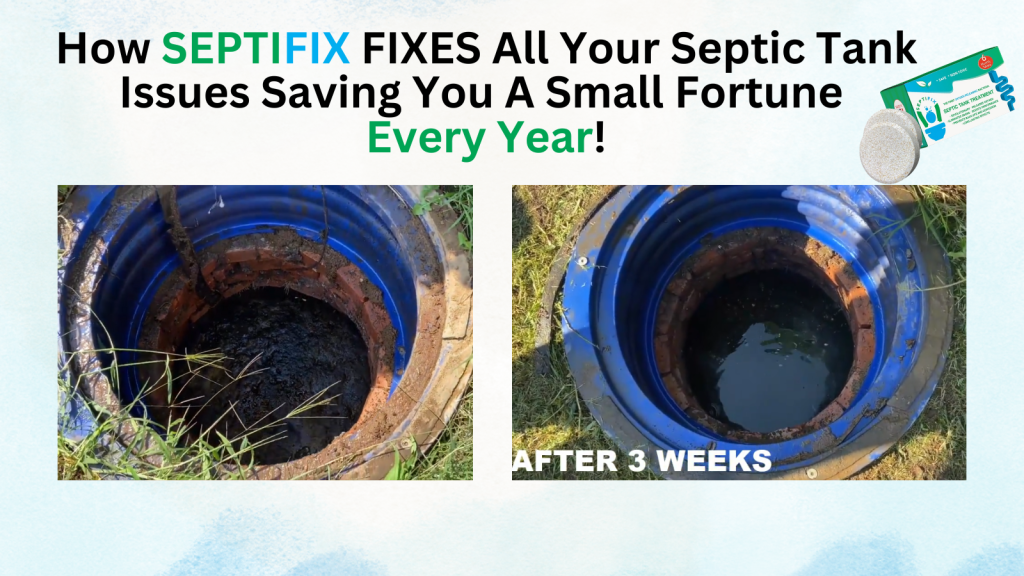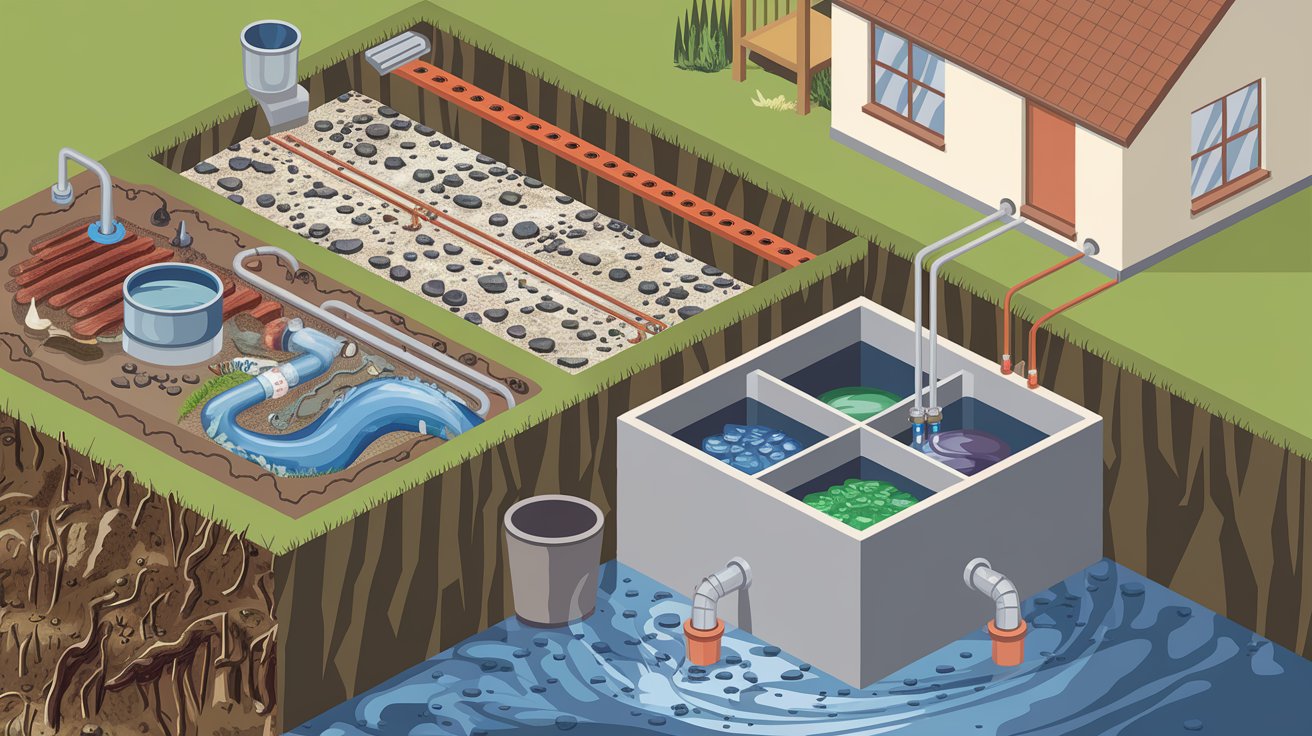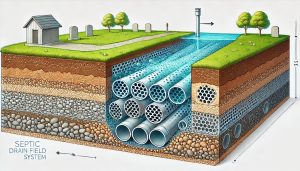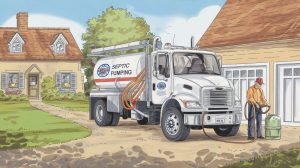Understanding how septic tanks handle wastewater is essential for homeowners relying on these systems. A well-functioning septic tank efficiently manages wastewater, protects the environment, and reduces health hazards. In this guide, we’ll explore the key components of a septic system, key processes, and maintenance practices that ensure optimal performance.
Septic systems are vital for homes not connected to municipal sewage lines. They handle wastewater generated from sinks, toilets, showers, and washing machines. By understanding their operation and proper care, homeowners can prevent costly repairs and environmental contamination.
Table of Contents
- What Is a Septic Tank and How Does It Work?
- Key Components of a Septic System
- The Wastewater Treatment Process Inside a Septic Tank
- Common Issues with Septic Wastewater Management
- Septifix
- Septic Permit Links by State
What Is a Septic Tank and How Does It Work?
A septic tank is an underground chamber made of concrete, fiberglass, or plastic, used to treat household wastewater. It works by separating solids, breaking down organic matter, and safely releasing treated water into the drainfield. This process relies heavily on natural bacterial activity to decompose waste efficiently.
Wastewater enters the septic tank through an inlet pipe. Inside the tank, solids settle at the bottom, forming sludge, while lighter materials like oils float to the top as scum. Consequently, the remaining liquid, known as effluent, flows out through an outlet pipe to the drainfield.
Septic tanks operate in an anaerobic environment, which limits oxygen. In this environment, bacteria break down solid waste effectively. However, the system’s efficiency depends on regular maintenance, proper usage, and the system’s design.
Key Components of a Septic System
A septic system consists of several essential components, each playing a specific role in treating and managing wastewater effectively. Understanding the key components of a septic system helps homeowners maintain their systems efficiently.
Inlet Pipe
The inlet pipe serves as the entry point for all wastewater generated in the household. It transports water from sinks, toilets, and other fixtures into the septic tank. The inlet pipe is designed to ensure a steady flow and prevent backflow. Blockages in this pipe can disrupt the entire septic process.
Septic Tank
The septic tank is the heart of the system. It is a watertight container designed to hold wastewater long enough for solids to settle and lighter materials to float. Inside the tank:
- Solids sink to form sludge.
- Oils and grease rise to form a scum layer.
- Anaerobic bacteria break down organic matter in the sludge.
The size of the septic tank must match the household’s water usage to ensure effective treatment.
Outlet Pipe
The outlet pipe carries the partially treated effluent from the septic tank to the drainfield. It is equipped with a T-shaped baffle to prevent solids from escaping the tank and clogging the drainfield. Regular inspection of the outlet pipe prevents blockages and ensures a smooth flow.
Drainfield (Leach Field)
The drainfield is a network of perforated pipes buried in gravel-filled trenches. Its primary role is to disperse treated effluent into the surrounding soil. The soil naturally filters and treats the water further before it reaches the groundwater. Proper drainfield design prevents pooling, odors, and contamination.
Baffles
Baffles are installed at both the inlet and outlet pipes within the septic tank. These structures prevent scum and solids from exiting the tank and clogging the drainfield. They also help maintain the flow direction of wastewater.
Soil Absorption Field
The soil absorption field works in conjunction with the drainfield. Healthy soil acts as a natural filter, removing harmful bacteria, viruses, and nutrients from the effluent. Compacted or clay-heavy soil can hinder absorption, causing system failure.
Ventilation System
Septic systems include ventilation pipes to release gases produced during the bacterial breakdown of waste. Proper ventilation prevents pressure buildup and eliminates unpleasant odors from escaping through household fixtures.
The Wastewater Treatment Process Inside a Septic Tank
Separation of Solids and Liquids
As wastewater enters the septic tank, heavier solids settle at the bottom, forming sludge, while lighter particles rise to form a scum layer. Consequently, this process, which is a natural separation, is essential for efficient treatment.
Bacterial Breakdown
Anaerobic bacteria within the tank break down organic matter in the sludge, reducing its volume and toxicity. These bacteria are naturally present in human waste and thrive in low-oxygen environments.
Effluent Discharge
The treated liquid effluent exits the septic tank through the outlet pipe and enters the drainfield, where it is naturally filtered before re-entering the groundwater. Proper flow rates ensure the effluent doesn’t overwhelm the drainfield.
Common Issues with Septic Wastewater Management
Septic systems can face several challenges, including:
- Clogs: Blockages in pipes can disrupt the flow of wastewater.
- Overflow: A full tank can lead to wastewater surfacing in the yard.
- Poor Drainage: Inefficient drainfields may cause pooling water and foul odors.
- Bacterial Imbalance: The overuse of harsh chemicals can kill essential bacteria in the tank.
Preventive maintenance, like regular pumping and inspections, can minimize these problems. Ignoring these signs can lead to expensive repairs and environmental hazards.
Signs of a Failing Septic System
- Slow drains in sinks and showers.
- Unpleasant odors near the drainfield.
- Standing water or overly lush grass over the drainfield.
- Backed-up toilets or sewage in the home.
Conclusion
Septic tanks play a vital role in managing household wastewater. Understanding the key components of a septic system and how septic tanks handle wastewater ensures efficient operation, reduces environmental impact, and avoids costly repairs. Regular maintenance, routine inspections, and responsible usage are key to a long-lasting septic system.
The Role of Perforated Pipes in Drain Fields
What Happens During a Pumping Service?
Septic Tanks vs. Sewer Systems | Choosing the Right Option
Directory | Virginia Septic Service Providers | Part 2
Directory | Virginia Septic Service Providers : Best Professionals | Part 1
Septic Treatments for Odor Control: Best Methods for Eliminating Unpleasant Smells
How to Maintain a Healthy Bacteria Balance | Tips to Ensure Your Septic System Has the Right Microbial Environment
Directory | Vermont Septic Service Providers : Best Professionals
Septifix









